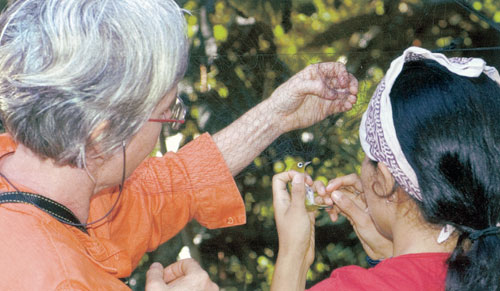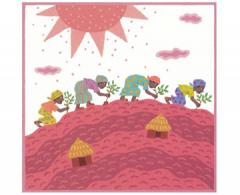
This Article From Issue
November-December 2008
Volume 96, Number 6
Page 522
DOI: 10.1511/2008.75.522
For many children, the subject of climate change may be confusing or even scary. Lynne Cherry and Gary Braasch want to give the middle school set the facts. In their book How We Know What We Know about Our Changing Climate: Scientists and Kids Explore Global Warming (Dawn Publications, $17.95, ages 10 to 14), readers will discover that clues to climate change can be found in multiple places where scientists, citizens and even children can go look. That includes records of bird migration patterns and the dates that cherry trees bloom, as well as analyses of air bubbles sealed inside glacial ice cores and of the shells of foraminifera, single-celled sea creatures. After providing many more examples, the authors explain how such evidence has convinced nearly all climate scientists worldwide that greenhouse gases are making the world warmer.

From How We Know What We Know about Our Changing Climate: Scientists and Kids Explore Global Warming by Lynne Cherry and Gary Braasch.
Cherry, the author of many children's books on the environment, and Braasch, a photojournalist and the author of Earth Under Fire, a book on global warming for grown-ups, also offer science lessons that students can apply to any research inquiry. They make the crucial point that scientists' hunches about Earth's complicated ecosystems aren't always correct. Some predicted that certain penguins would falter in warmer temperatures and that high-latitude trees would flourish—but the data proved them wrong. Who doesn't need reminding that their hypotheses need testing?
A bonus: The book lists multiple ways children and communities around the world can and do help study climate and reduce greenhouse gas emissions in their own backyards. And a word of warning: A teacher's guide for the book identifies the best audience as grades 5 to 8; kids on the older side will absorb more.

American Scientist Comments and Discussion
To discuss our articles or comment on them, please share them and tag American Scientist on social media platforms. Here are links to our profiles on Twitter, Facebook, and LinkedIn.
If we re-share your post, we will moderate comments/discussion following our comments policy.